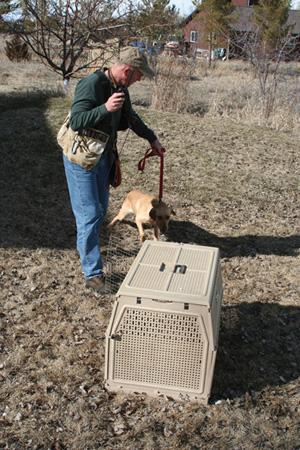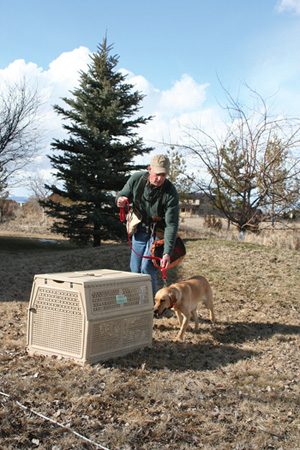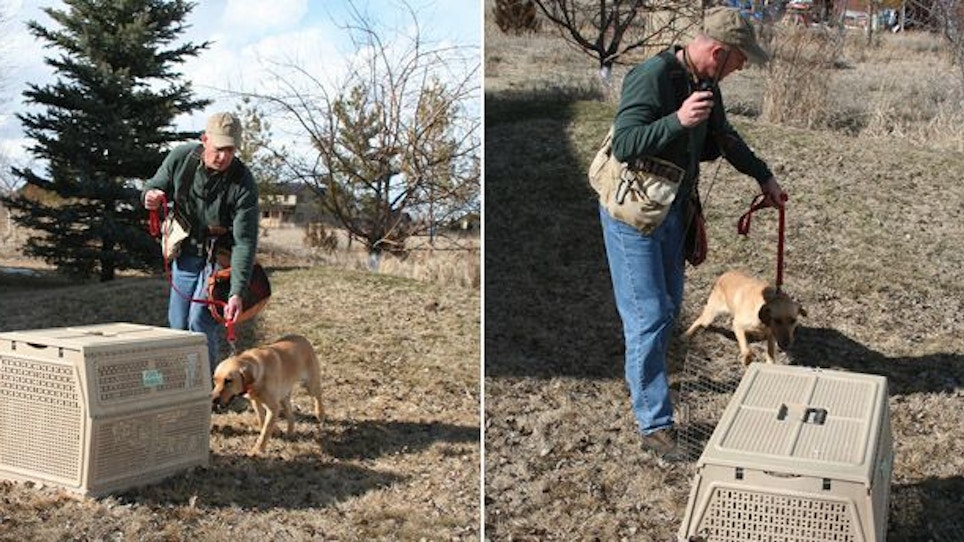 I’ve been told a dog needs to be corrected within 1.3 seconds of an indiscretion. (We dog trainers call indiscretions “screwups.”) How they — whoever “they” are — arrived at this figure, I have no way of knowing. But there’s no doubt a correction administered sooner is better than one administered later.
I’ve been told a dog needs to be corrected within 1.3 seconds of an indiscretion. (We dog trainers call indiscretions “screwups.”) How they — whoever “they” are — arrived at this figure, I have no way of knowing. But there’s no doubt a correction administered sooner is better than one administered later.
That’s tough to do if you rely on screaming, chasing and then whacking your dog.
E-collars were invented to solve that problem. They are invaluable tools used by almost every pro retriever and pointing-dog trainer in the country. I’m primarily a pointing-dog trainer, but the principles of proper e-collar use apply regardless of breed.
Let’s keep it simple and reduce the principles of e-collar use to just two:
1) Show the dog first what it is you want it to do, and
2) Reinforce the command with the collar.
First, though, an ironclad rule: before you can train your dog with a collar, he must be collar-conditioned. Here’s why. Let’s say you’re at a party, and out of the blue, a man walks up and whacks you in the head with a board. Understandably, you’d be confused and scared. Now let’s say you just asked that man’s wife for her phone number, and then the man — her husband — whacks you with a board. You might still be scared, but you wouldn’t be confused.
Yet this is often exactly how dogs are “corrected” by beginners, apropos of nothing the dog can link to the punishment. Collar-conditioning helps prevent that.
There’s more than one way to collar-condition a dog. I do it the way George Hickox showed me years ago. It works, and it’s simple.
1) Show the dog what it is you want it to do. The “kennel” command is a good place to start, so show the dog what “kennel” means by pushing it into the kennel and repeating the command. Do this with the e-collar on the dog but turned off.
2) When the dog shows a glimmer of understanding, turn on the collar to the lowest setting that registers with the dog. My collar goes to 18. I usually start a new dog on 1 or 2.
3) Next, turn on the stimulation first, followed by the command. Turn the stimulation off when the dog complies. If he doesn’t, force him into the kennel with the stimulation on, then turn it off. Always turn it off immediately after he complies (enters the kennel).
4) When he grasps the command with stimulation, move on to the next stage. This might be a week or two later. Now give the command first, followed by the stimulation. When he complies, turn the stimulation off immediately. Several days of this are usually sufficient.
 5) Next, give the command, then apply stimulation only if the dog doesn’t comply.
5) Next, give the command, then apply stimulation only if the dog doesn’t comply.
6) Finally, generalize the command. Move the crate to different parts of your yard, the back of your truck, whatever. Get the dog used to obeying the kennel command in different locations.
It is important not to rush the process. Collar-conditioning is the foundation for all future collar use. When a dog is successfully collar-conditioned, he’ll grasp the message you’re trying to get across when you nick him, assuming it’s well-timed. And the conditioning procedure doesn’t change when teaching the next two or three commands. When you teach your dog to sit, first show him what “sit” means, then take him through the three stages of applied stimulation, and finish by generalizing the command. Go through the same steps with “here” and other basic commands, verbal or whistled. Later, when the dog is thoroughly schooled in collar corrections, you won’t have to follow all six steps when teaching a new command.
Many people do a good job training their dogs in the yard but fail miserably to control their canines in the field. This is almost always due to intense excitement on the dog’s part, which leads to ignored commands and bolting, and intense excitement on the part of the trainer, which leads to mistimed corrections or no corrections at all. You can’t do much about the dog’s excitement, but there’s plenty you can do about yours.
Let’s say you’re training an inexperienced puppy, a young Lab on his first season in the marsh. If you want that dog to be a reliable, well-trained hunting companion for the rest of your life — and you do, or you wouldn’t be reading this — put down your gun, pick up the transmitter, and let somebody else shoot. Give your little biscuit-eater clear commands followed immediately by corrections if he disobeys. That will let him know the commands he’s been trained to obey in the yard are also commands he has to obey in the field.
That’s all there is to it. No magic, no mystery. Collar-condition your dog first, then, when training or hunting, issue commands he understands followed immediately by a correction if he disobeys.
A few notes from personal experience: first, try to control your temper. This is as hard for me as anyone I know, but I try. Corrections given in anger often cause more problems than they solve.
Second, don’t correct the dog because he should have done this or that; correct him only after you’ve issued a verbal or whistled command he understands and willfully disobeys. Dogs don’t understand concepts, they have to be shown.
And last, give your pup the benefit of the doubt. If you’re not certain he disobeyed, keep your thumb off the button. You’ll have another chance, probably sooner rather than later. Remember, he won’t resent being corrected if he knows why. And you’ll both be happier animals as a result.






